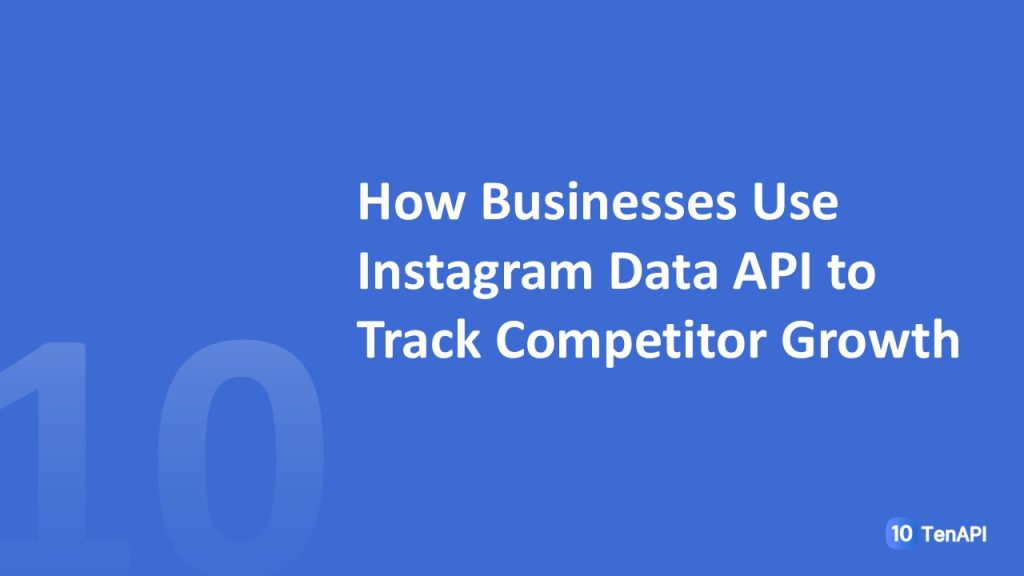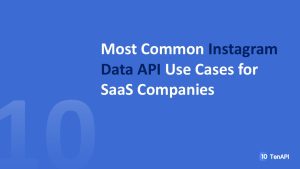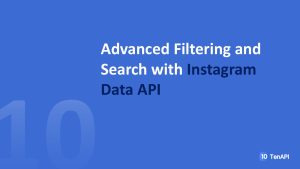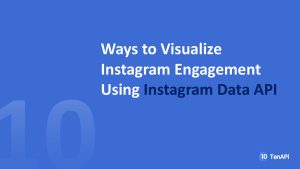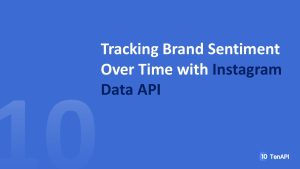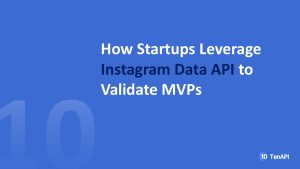Instagram isn’t just a place for selfies and brunch photos anymore — it’s a serious business platform. With over a billion users and millions of brands, competition is fierce. So, how do smart businesses stay ahead? One powerful method is by using the Instagram Data API to track competitor growth.
Sounds techy? Don’t worry. We’ll break it all down in a simple, conversational way. By the end of this article, you’ll understand how brands are leveraging this tool to stay sharp, spot trends, and outperform their rivals.
Understanding the Instagram API
What Data Can You Access with the API?
The Instagram Graph API provides access to:
-
Follower counts
-
Engagement data (likes, comments, reach)
-
Post performance
-
Stories insights
-
Mentions and hashtags
-
Audience demographics (for Business/Creator accounts)
Limitations and Permissions
You need permission to access certain data. You can’t see private accounts or get personal user data without consent. Also, Instagram is strict about rate limits, meaning how many times you can call the API per hour.
Differences Between Basic and Graph API
-
Basic Display API: Gives read-only access to basic profile info and media.
-
Graph API: Full-blown analytics for Business and Creator accounts. Ideal for competitor tracking.
Benefits of Tracking Competitors on Instagram
Identifying Industry Trends
By watching what your competitors post — and how their audience reacts — you can spot trends before they go mainstream.
Spotting Content That Works
Is their latest reel getting crazy engagement? Maybe it’s the format, caption, or timing. Learn from their wins (and mistakes).
Benchmarking Your Own Growth
Tracking competitors sets a realistic benchmark. Are you growing faster or slower? Why?
Setting Up Instagram Data API for Your Business
Prerequisites for Using the API
You’ll need:
-
A Facebook Developer Account
-
A Business or Creator Instagram account
-
A Facebook Page linked to your Instagram
Access Tokens and Permissions
Once you’ve set up the above, you’ll generate an Access Token to make requests. This token is like your “API key” to unlock data.
Connecting API with Data Tools
You can use platforms like:
-
Google Sheets (with scripts)
-
Power BI
-
Zapier or Make (for automation)
These tools help make sense of the raw data.
Key Metrics to Track Using Instagram API
Follower Growth Rate
Not just the number of followers, but how fast they’re growing. Sudden spikes could mean viral content — or a paid campaign.
Engagement Metrics
Look at:
-
Likes per post
-
Comments per post
-
Shares
-
Saves
It’s not just about numbers — it’s about interaction quality.
Posting Frequency and Timing
Do they post daily? Weekly? What time of day gets them the most engagement?
Hashtag Performance
Track which hashtags they’re using and which ones drive the most reach.
How to Analyze Competitor Data Effectively
Visual Dashboards and Reports
Raw numbers are boring. Use tools like Google Data Studio to visualize:
-
Growth curves
-
Engagement heatmaps
-
Top-performing posts
Using Tools like Power BI, Google Data Studio
These tools can connect directly to your API data, giving you dynamic reports that update automatically.
Setting Alerts for Key Competitor Changes
Set up alerts for:
-
Follower milestones
-
Viral posts
-
New campaigns or partnerships
Case Studies: Real Examples of Businesses Tracking Competitors
E-commerce Brands
They monitor competitor product launches, hashtag campaigns, and seasonal trends.
Local Businesses
Track how nearby cafes or gyms run promotions and what gets them attention.
Influencer Agencies
They analyze potential influencers’ past growth and compare them to competitors’ influencer rosters.
Common Mistakes to Avoid
Relying on Vanity Metrics
Don’t be fooled by big follower numbers. Look for engagement, not just quantity.
Not Respecting API Rate Limits
Too many requests can get your app banned. Be smart and batch your data pulls.
Violating Instagram’s Data Use Policy
Always follow Instagram’s terms — scraping or using unauthorized methods can backfire.
Legal and Ethical Considerations
Compliance with Data Privacy Laws
If you’re in the EU or handling EU data, make sure you’re GDPR-compliant.
Following Instagram’s Terms of Use
Never use bots or scraping tools outside of what Instagram permits via the official API.
Tools That Use Instagram API for Competitive Intelligence
Brandwatch
Great for social listening and competitive analysis.
Sprout Social
Offers competitor benchmarking and Instagram insights.
Hootsuite
Easy-to-use platform with scheduling and tracking features.
Custom API Solutions for Businesses
Hiring a Developer
A custom dashboard can show just the metrics you care about, in real time.
Using No-Code Platforms
Tools like Pabbly, Make (Integromat), and Zapier let you automate tracking with zero code.
Automating Data Collection
Set up daily or weekly reports sent to your inbox — no more manual checking.
Future of Instagram Data Analytics
Role of AI in Social Listening
AI tools are already analyzing tone, sentiment, and trends — faster than any human.
Predictive Analysis for Competitor Strategies
Soon, businesses will use AI to predict what competitors might do next. Crazy, right?
Tips to Stay Ahead of Competitors
Regular Monitoring
Don’t just set it and forget it. Monitor weekly.
Data-Driven Decisions
Let the numbers guide your strategy — not just your gut.
Iterating Your Strategy
Use insights to tweak your content, timing, and campaigns regularly.
Conclusion
In today’s competitive digital world, knowing what your competitors are up to is a game-changer. The Instagram Data API is like having a spyglass into your rival’s playbook — ethically, of course. By tracking growth, engagement, and strategy, you can sharpen your own game and stay one step ahead.
Don’t just post and pray. Use data to dominate.
FAQs
1. How often should I monitor my competitors?
At least once a week. Daily is ideal for high-competition niches.
2. Can I track private Instagram accounts?
No, Instagram’s API does not allow access to private accounts.
3. Are there free tools to use the Instagram API?
Yes! Tools like Google Sheets (with scripts) or limited versions of platforms like Metricool offer basic functionality.
4. What should I do if the API limit is reached?
Batch your data requests or upgrade your app’s permissions. Avoid making unnecessary calls.
5. Is it legal to use Instagram data for competitive analysis?
Yes, as long as you’re using public data and authorized APIs, you’re on the right side of the law.

